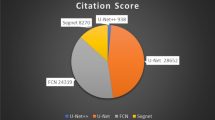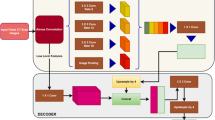Abstract
Segmenting precisely affected parts of the lungs from the output of CT (Computed Tomography) is critical in making inquiries on lung malignancy and can offer significant data for clinical conclusions. It plays a major and effective role in researches on lung diseases. The crux of the problem is developing automatic detection of lesion and segments them with perfect accuracy. Heterogeneity of lesion part makes segmentation a very difficult task. In TBGA (Toboggan Based Growing Automatic Segmentation Approach), the lack of degree of recognition results in difficulty in the boundary detection process during segmentation. To overcome the drawbacks, a Regression Neural Networks (RNN) Segmentation approach has been proposed in this paper. The degree of recognition is less in tissues which are associated to the neighboring lesion with pixels having same intensity. RNN provides a greater accuracy of recognition of the adjacent lesions with similar intensity when compared to other methods like Skeleton graph cut and Level set method. Segmentation is done based on the degree of recognition. So the RNN method proposed in this paper concentrates mainly on the precise detection of boundary for juxtapleural and juxtavascular lesions. The accuracy of segmenting lung parenchyma is a challenge in lesion segmentation. In RNN segmentation process, the result of parenchyma forms the basis of extracting lesion. RNN is a Learning Algorithm so the complexity of automatic lesion detection is avoided. RNN uses a trained set of data, so the resulting outcome is accurate.












Similar content being viewed by others
Explore related subjects
Discover the latest articles and news from researchers in related subjects, suggested using machine learning.Change history
06 June 2022
This article has been retracted. Please see the Retraction Notice for more detail: https://doi.org/10.1007/s12652-022-04080-9
References
Aerts HJWL, Velazquez ER, Leijenaar RTH, Parmar C, Grossmann P, Cavalho S, Bussink J, Monshouwer R, Haibe-Kains B, Rietveld D, Hoebers F, Rietbergen MM, Leemans CR, Dekker A, Quackenbush J, Gillies RJ, Lambin P (2014) Decoding tumour phenotype by non-invasive imaging using a quantitative radiomics approach. Nat Commun 5:4006. https://doi.org/10.1038/ncomms5006
Bian Z et al (2014) Accurate airway centre line extraction based on topological thinning using graph-theoretic analysis. Bio-Med Mater Eng 24(6):3239–3249
Campos DM, Simoes A, Ramos I, Campilho A (2014) Feature-Based Supervised Lung Nodule Segmentation. Int Conf Health Inform 42:23–26
Candemir S, Palaniappan K, Akgul YS (2013) Multi-class regularization parameter learning for graph cut image segmentation. Proc IEEE Int Symp Biomed Imag, pp. 1473–1476
Candemir S, Jaeger S, Palaniappan K, Musco JP, Singh RK, Xue Z, Karargyris A, Antani S, Thoma G, McDonald CJ (2014) Lung segmentation in chest radiographs using anatomical atlases with non rigid registration. IEEE Trans Med Imaging 33(2):577–590
Gu Y, Kumar V, Hall LO, Goldgof DB, Li CY, Korn R, Bendtsen C, Velazquez ER, Dekker A, Aerts H, Lambin P, Li X, Tian J, Gatenby RA, Gillies RJ (2013) Automated delineation of lung tumors from CT images using a single click ensemble segmentation approach. Pattern Recognit 46(3):692–702
Han B, Han Y, Gao X, Zhang L (2019) Boundary constraint factor embedded localizing active contour model for medical image segmentation. J Ambient Intell Hum Comput 10:3853–4386
Hu S, Hoffmann EA, Reinhardt JM (2001) Automatic lung segmentation for accurate quantitation of volumetric X-ray CT images. IEEE Trans Med Imaging 20:490–498
Jaeger S, Karargyris A, Candemir S, Folio L, Sielgelman J, Callaghan F, Xue Z, Palaniappan K, Singh R, Antani S, Thoma G, Xiang Y-X, Lu P-X, McDonald C (2014) Automatic tuberculosis screening using chest radiographs. IEEE Trans Med Imaging 33(2):233–245
Jamil U, Sajid A, Hussain M, Aldabbas O, Alam A, Shafiq MU (2019) Melanoma segmentation using bio-medical image analysis for smarter mobile healthcare. J Ambient Intell Hum Comput 10:4099–4120
Karthik M, Padma Suresh L (2015) Stereo vision based (3D) human detection and targeting, 2015 International conference on circuits, power and computing technologies [ICCPCT- 2015]
Kubota T, Jerebko AK, Dewan M, Salganicoff M, Krishnan A (2011) Segmentation of pulmonary nodules of various densities with morphological approaches and convexity models. Med Image Anal 15(1):133–154
Lassen B, Van Rikxoort EM, Schmidt M, Kerkstra S, Van Ginneken B, Kuhnigk JM (2013) Automatic segmentation of the pulmonary lobes from chest CT scans based on Fissures, Vessels, Bronchi. IEEE Trans Med Imaging 32(2):210–222
Liu H, Cao H, Song E, Ma G, Xiangyang Xu, Jin R, Jin Y, Hung C-C (2019) A cascaded dual-pathway residual network for lung nodule segmentation in CT images. Phys Med 63:112–121
Mansoor A, Bagci U, Xu Z, Foster B, Olivier KN, Elinoff JM et al (2014) A generic approach to pathological lung segmentation, IEEE Trans. Med Imaging 33:2293–2310
Melekoodappattu JG, Subbian PS (2019) A Hybridized ELM for automatic micro calcification detection in mammogram images based on multi-scale features. J Med Syst. Springer, Berlin
National Cancer Institute (2005) LIDC: datasets as a public resource, [Online]. Available: https://imaging.cancer.gov/ reports and publications/ reports and presentations/ first data set. Accessed 17 July 2019
Organization WH (2011) Description of the global burden of NCDs, their risk factors and determinants. World Health Organization, Geneva
Perumal Sankar S, Vishwanath N, Jer Long H, Karthick S (2017) An effective content based medical image retrieval by using ABC based Artificial Neural Network (ANN), current medical imaging reviews. Betham Science Publication, Sharjah
Riquelme D, Akhlouf AM (2020) Deep learning for lung cancer nodules detection and classification in CT scans. MDPI publication, Basel, pp 28–67
Sato Y, Nakajima S, Shiraga N, Atsumi H (1998) Three-dimensional multi-scale line filter for segmentation and visualization of curvilinear structures in medical images. Med Image Anal 2(2):143–168
Seelan LJ, Suresh LP, Veni SHK (2016) Automatic extraction of Lung lesion by using optimized toboggan based approach with feature normalization and transfer learning methods, International Conference on Emerging Technological Trends (ICETT)
Setarehdan SK, Singh S (2002) Advanced algorithmic approaches to medical image segmentation-state-of-the-art, application in cardiology, neurology mammography and pathology. Springer, Berlin. https://doi.org/10.1007/978-0-85729-333-6
Shaukat F, Raja G, Frangi AF (2019) Computer-aided detection of lung nodules: a review. J Med Imaging 6(2):020901–20911
Shen W, Zhou M, Yang F, Yu D, Dong D, Yang C, Zang Y, Tian J (2016) Multi-crop Convolutional Neural Networks for lung nodule malignancy suspiciousness classification. Pattern Recogn 61:663–673
Shiraishi J, Li Q, Appelbaum D, Doi K (2011) Computer-aided diagnosis and artificial intelligence in clinical imaging. Semin Nucl Med 41(6):449–462. https://doi.org/10.1053/j.semnuclmed.2011.06.004
Siegel R, Naishadham D, Jemal A (2013) Cancer statistics. CA Cancer J Clin 63:11–30
Song J, Yang C et al (2015) A new quantitative radiomics approach for non-small cell lung cancer (NSCLC) prognosis. Int Conf Radiological Society of North America, Chicago
Song J, Yang C, Fan L, Wang K, Yang F, Liu S, Tian J (2016) Lung lesion extraction using a toboggan based growing automatic segmentation approach. IEEE Trans Med Imaging 35(1):337–353
Sun S, Guo Y, Guan Y, Ren H (2013) Juxta-vascular nodule segmentation based on the flowing entropy and geodesic distance feature. Sci Sin (Informationis) 61:1136–1146
Suzuki K, Chen Y (eds) (2018) Artificial intelligence in decision support systems for diagnosis in medical imaging. Springer, Berlin
Suzuki K et al (2005) False-positive reduction in computer-aided diagnostic scheme for detecting nodules in chest radiographs by means of massive training artificial neural network. Acad Radiol 12(2):191–201
Tan M, Deklerck R, Jansen B, Bister M, Cornelis J (2011) A novel computer-aided lung nodule detection system for CT images. Med Phys 38(10):5630
Author information
Authors and Affiliations
Corresponding author
Additional information
Publisher's Note
Springer Nature remains neutral with regard to jurisdictional claims in published maps and institutional affiliations.
About this article
Cite this article
Sankar, S.P., George, D.E. RETRACTED ARTICLE: Regression Neural Network segmentation approach with LIDC-IDRI for lung lesion. J Ambient Intell Human Comput 12, 5571–5580 (2021). https://doi.org/10.1007/s12652-020-02069-w
Received:
Accepted:
Published:
Issue Date:
DOI: https://doi.org/10.1007/s12652-020-02069-w




